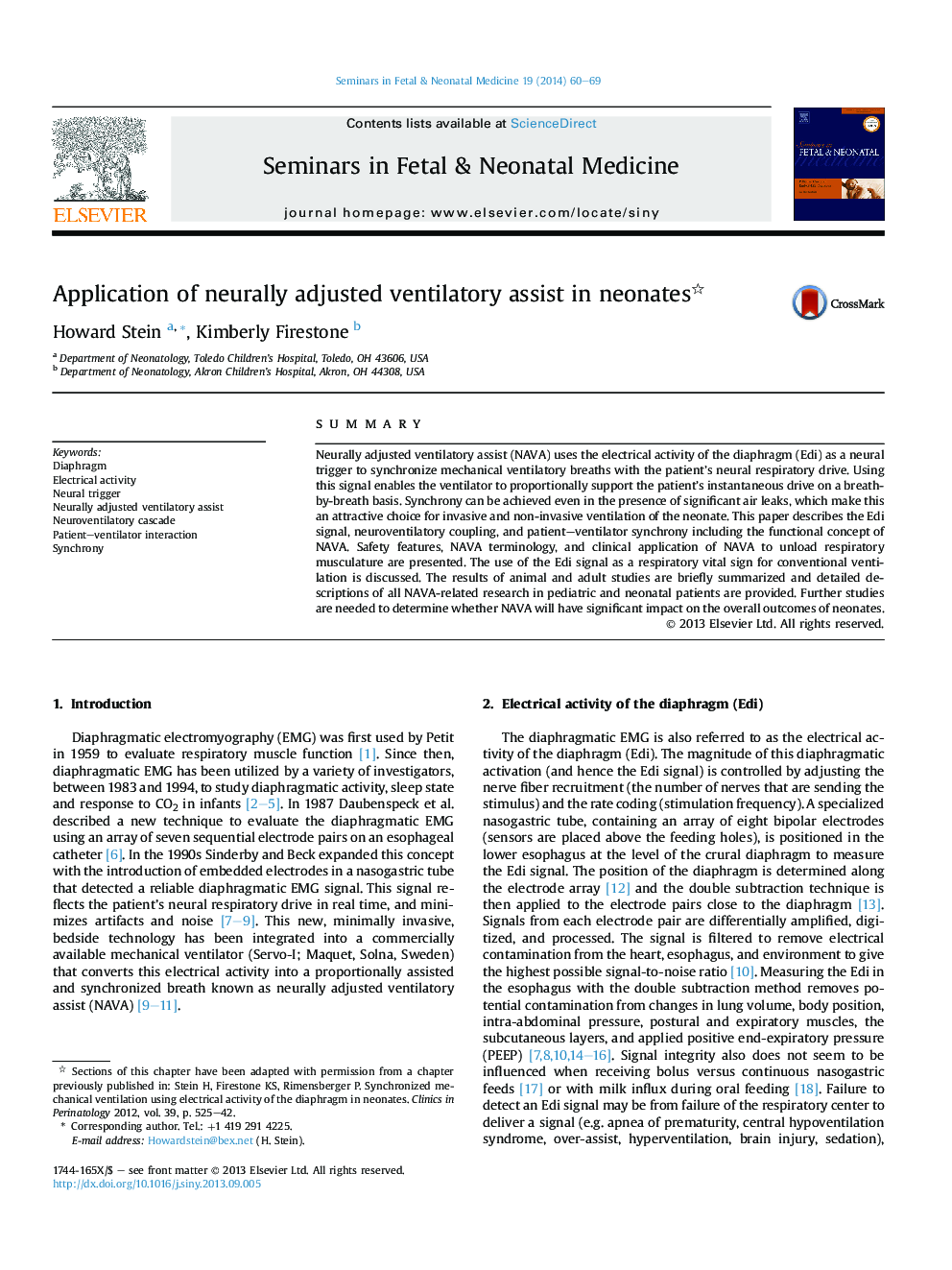| کد مقاله | کد نشریه | سال انتشار | مقاله انگلیسی | نسخه تمام متن |
|---|---|---|---|---|
| 3974145 | 1256970 | 2014 | 10 صفحه PDF | دانلود رایگان |
SummaryNeurally adjusted ventilatory assist (NAVA) uses the electrical activity of the diaphragm (Edi) as a neural trigger to synchronize mechanical ventilatory breaths with the patient's neural respiratory drive. Using this signal enables the ventilator to proportionally support the patient's instantaneous drive on a breath-by-breath basis. Synchrony can be achieved even in the presence of significant air leaks, which make this an attractive choice for invasive and non-invasive ventilation of the neonate. This paper describes the Edi signal, neuroventilatory coupling, and patient–ventilator synchrony including the functional concept of NAVA. Safety features, NAVA terminology, and clinical application of NAVA to unload respiratory musculature are presented. The use of the Edi signal as a respiratory vital sign for conventional ventilation is discussed. The results of animal and adult studies are briefly summarized and detailed descriptions of all NAVA-related research in pediatric and neonatal patients are provided. Further studies are needed to determine whether NAVA will have significant impact on the overall outcomes of neonates.
Journal: Seminars in Fetal and Neonatal Medicine - Volume 19, Issue 1, February 2014, Pages 60–69
